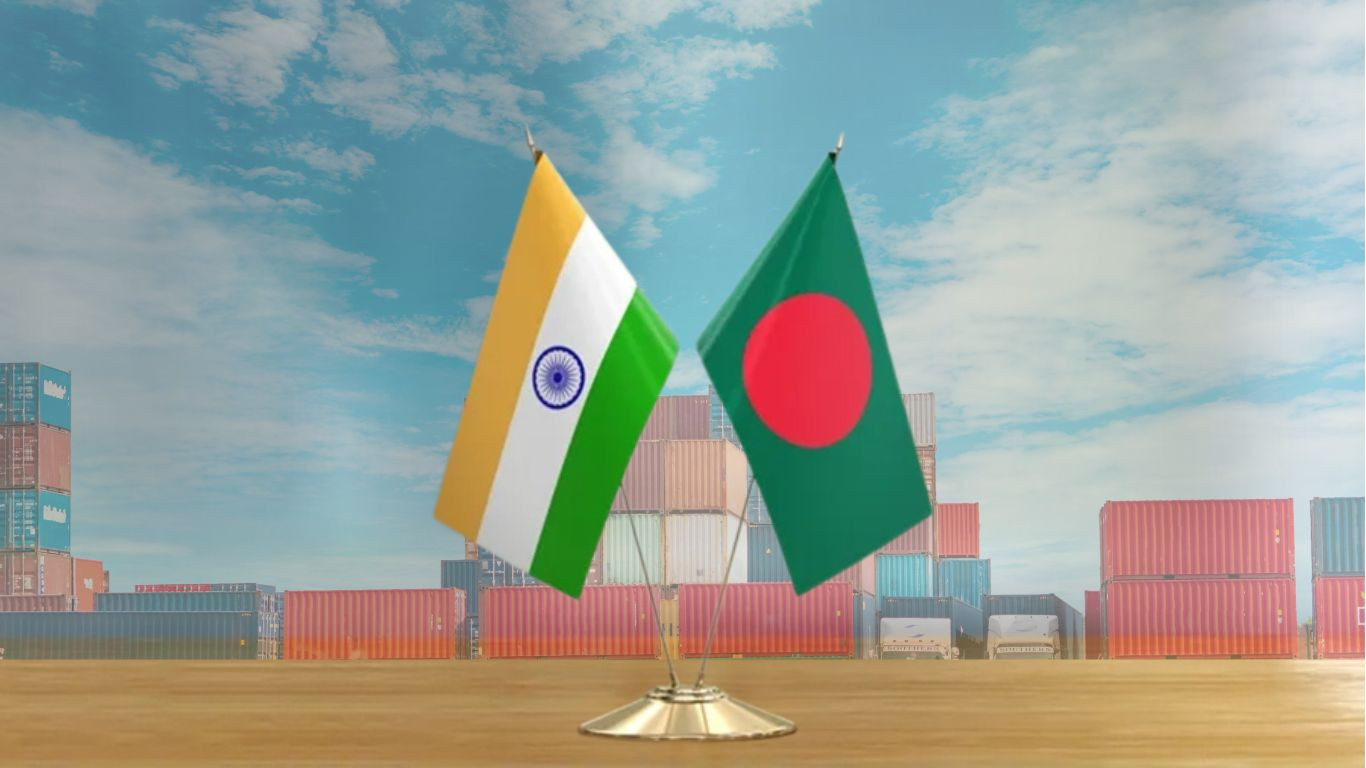Ravi Dutta Mishra
Published:2025-04-09 17:56:37 BdST
India ends transshipment facility for Bangladesh
In what seems to be a move after Bangladesh advocated for the extension of the Chinese economy into the strategically important Northeast India region, New Delhi has terminated the transshipment facility for Bangladesh’s export cargo, reports The Indian Express.
This step could potentially disrupt Bangladesh’s trade with Bhutan, Nepal, and Myanmar, according to a notification issued by the Central Board of Indirect Taxes and Customs (CBIC) on Tuesday.
The CBIC, in its circular dated 8 April, said that it had rescinded its earlier circular dated 29 June 2020 in respect of the “transhipment of export cargo from Bangladesh to third countries through Land Customs Stations (LCSs) to ports or airports in containers or closed-bodied trucks”.
The 2020 circular had permitted the transhipment of export cargo from Bangladesh to third countries using Indian Land Customs Stations en route to Indian ports and airports, to enable smooth trade flows for Bangladesh’s exports to countries such as Bhutan, Nepal, and Myanmar.
What Yunus said about Northeast India
During his four-day visit to China, from March 26-29, the Chief Adviser of Bangladesh’s interim government, Professor Muhammad Yunus, had remarked that, with Northeast India being “landlocked”, Dhaka was the “only guardian of the ocean for all this region”.
This statement was widely interpreted as an attempt by Dhaka to assert its leverage over access to the Northeast — a matter of concern for Delhi.
Yunus’ efforts to portray Beijing as a new strategic partner have further complicated the already fragile India-Bangladesh relationship.
“The seven states of eastern India, known as the Seven Sisters, are a landlocked region. They have no direct access to the ocean,” Yunus said.
“We are the only guardian of the ocean for this entire region. This opens up a huge opportunity. It could become an extension of the Chinese economy — build things, produce things, market things, bring goods to China and export them to the rest of the world,” he added.
What the new circular entails
Think tank Global Trade Research Initiative (GTRI) said with the new circular, the transhipment arrangement has been terminated with immediate effect. However, cargo that has already entered Indian territory under the earlier system will be allowed to exit as per existing procedures, according to the circular.
Former trade officer and Head of GTRI, Ajay Srivastava, noted that India had consistently supported Bangladesh’s interests and had provided one-way, zero-tariff access to Bangladeshi goods (with the exception of alcohol and cigarettes) to the vast Indian market for the past two decades.
“However, Bangladesh’s plans to establish a strategic base near the Chicken’s Neck area with China’s assistance may have prompted this action. Bangladesh has invited Chinese investment to revitalise the airbase at Lalmonirhat, near India’s Siliguri Corridor,” Srivastava said.
The withdrawal of this facility is expected to disrupt Bangladesh’s export and import logistics, particularly with Bhutan, Nepal, and Myanmar, which rely on Indian infrastructure for third-country trade. The previous mechanism had offered a streamlined route through India, reducing transit time and cost. Without it, Bangladeshi exporters may now face logistical delays, increased costs, and greater uncertainty.
Additionally, Nepal and Bhutan — both landlocked nations — may raise concerns about restricted transit access to Bangladesh, especially as this move is likely to hamper their trade with the country.
Reacting to Bangladesh Yunus, Assam Chief Minister Himanta Biswa Sarma had called the statement “offensive” and “strongly condemnable”. Sarma stated on X that Yunus’ statement underscores the “persistent vulnerability narrative associated with India’s strategic ‘Chicken Neck’ corridor”. Sarma argued for developing better transport networks connecting the region with the rest of India, including the development of alternative road routes bypassing the corridor.
The North-Eastern states of Assam, Arunachal Pradesh, Manipur, Meghalaya, Nagaland, Mizoram, Tripura and Sikkim collectively have a 1,596 km long international border with Bangladesh, 1,395 km border with China, 1,640 km border with Myanmar, 455 km border with Bhutan and 97 km border with Nepal, but are only connected with the rest of India through a 22 km strip of land called the ‘Chicken Neck’ corridor.
India’s WTO commitments
However, Srivastava noted that the decision could raise questions regarding India’s commitments under World Trade Organization (WTO) provisions, which mandate freedom of transit for goods to and from landlocked countries.
“According to WTO rules, particularly Article V of the General Agreement on Tariffs and Trade (GATT) 1994, all WTO members are required to allow freedom of transit for goods moving to and from landlocked countries. This means such transit must be unrestricted, free from unnecessary delays, and not subject to transit duties,” Srivastava explained.
Further support comes from the WTO Trade Facilitation Agreement (TFA), Article 11, which strengthens and modernises the transit provisions under GATT. It calls for transparent procedures, reduced inspections, and regional cooperation, while promoting practical solutions such as guarantees or bonds to ease cross-border trade.
These rules aim to ensure that landlocked countries such as Nepal and Bhutan have efficient and fair access to global markets via neighbouring transit countries such as India.
Ravi Dutta Mishra is a Principal Correspondent with covering policy issues related to trade, commerce and banking
Unauthorized use or reproduction of The Finance Today content for commercial purposes is strictly prohibited.


